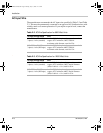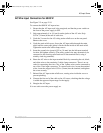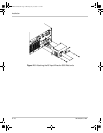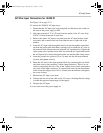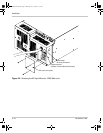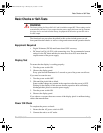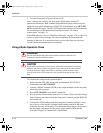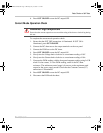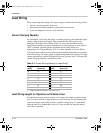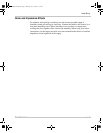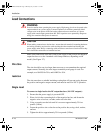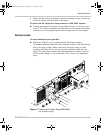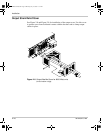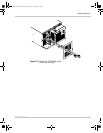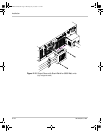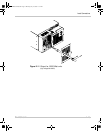
Installation
2–16 TM-XDOP-01XN
Load Wiring
When connecting load wiring to the power supply, consider the following factors:
• Current carrying capacity of the wire
• Maximum load wiring length for operation with sense lines
• Noise and impedance effects of the load lines
Current Carrying Capacity
As a minimum, load wiring must have a constant capacity greater than the output
current rating of the power supply. This ensures that the wiring will not be
damaged even if the load is shorted. Table 2-4. shows the maximum current
rating, based on 450A per square centimeter, for various gauges of wire rated for
105°C operation. Operating at the maximum current rating results in a
temperature rise of approximately 30°C for a wire operating in free air. Where
load wiring must operate in areas with elevated ambient temperatures or bundled
with other wiring, use larger gauges or higher temperature-rated wiring. For high
current applications, custom-designed bus bars are typically used. To increase the
current carrying capability, use parallel cables.
Load Wiring Length for Operation with Sense Lines
For applications using remote sensing, or for improved voltage regulation at the
load, you must limit the voltage drop across each load line. We recommend that
you use the larger load wiring to ensure a smaller voltage drop (1V maximum),
although units will compensate for up to 5V drop in each line with the remote
sense lines connected.
Table 2-4
Current Carrying Capacity for Load Wiring
a
a. Single insulated conductors in free air, 30°C
Wire Size
(AWG)
Maximum
Current (A)
Wire Size
(AWG)
Maximum
Current (A)
20 2.5 4 97
18 4 2 155
16 6 1 192
14 10 1/0 247
12 16 2/0 303
10 21 3/0 350
836 4/0405
6 61 250MCM 455
TM-XDOP-01XN.book Page 16 Monday, July 17, 2006 11:19 AM



